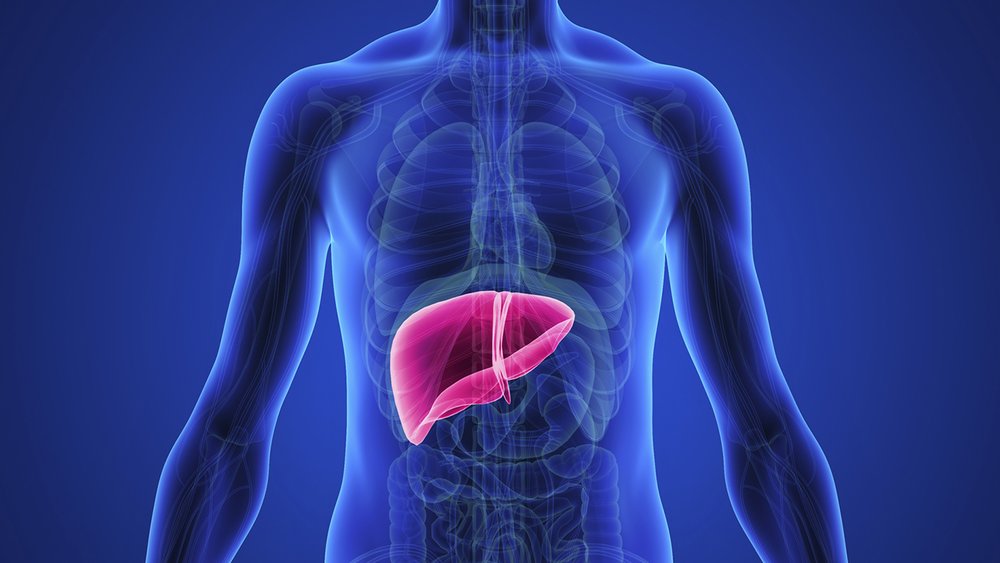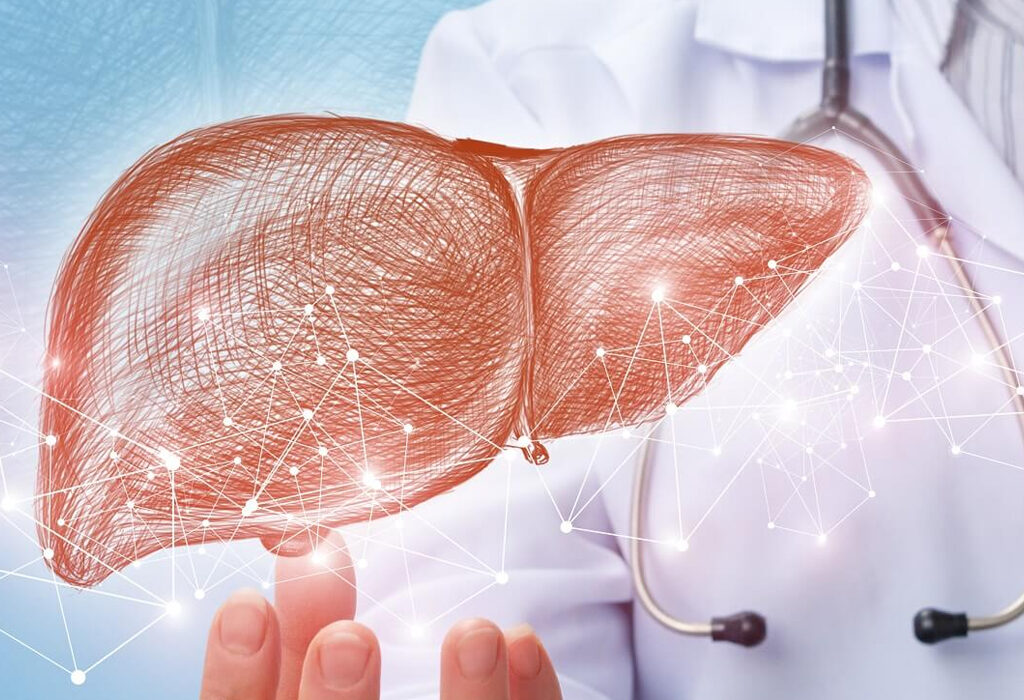The liver is located on the upper right side of the abdomen, just below the diaphragm and is the largest internal organ in the human body. Adult liver weighs about 1.5 kg. The blood of the digestive system must first be filtered in this organ before it can travel elsewhere in the body. However, some times this important organ in body is exposed to some diseases. That being so, liver transplant is sometimes necessary. So, in this article, we want to delve in understanding liver transplant procedure.
Understanding the structure and importance of the liver in the body
The main roles of this organ are to eliminate toxins from the body, absorb nutrient and help regulate the body’s metabolism. The liver has very important functions in the body so that without it, life cannot continue. This prolific organ also might suffer from various diseases, the most important of which is fatty liver disease.
One of the special abilities of the liver is that it has the power to regenerate itself, so if a quarter of the liver is healthy or transplanted from a healthy person to someone who has lost their liver, it will be back to its full shape after a while.
One of the liver problems is liver cirrhosis. Our human liver is made up of healthy cells, but sometimes for various reasons, wounds replace healthy tissue. The wound gradually spreads and, in this case, we say that the person has liver cirrhosis. In fact, healthy tissue is severely damaged and replaced by wound tissue.
Understanding liver transplant: Liver problems
Things that prevent vital liver function include:
Fat accumulation
Alcohol abuse
Viral infection
Accumulation of iron or copper
Toxic damage
Cancer
Liver anatomy
The liver is located in the lower part of the lower ribs, below the diaphragm, which separates the heart, lungs and stomach from the abdominal cavity. Part of it is in the upper abdomen and most of the liver is on the right side of the body. Its smaller lobe extends to the left to the diaphragm.
The liver is not normally felt because it is protected by the lower ribs. However, blows to the soft tissues of the upper abdomen can damage the liver.
Liver pain may appear as pain in the upper abdomen. This condition is usually on the left or center, but can sometimes occur on the right side or even have pain in the lower abdomen. If liver abnormalities are suspected, doctors often examine the abdomen because the swollen liver is fully felt.
Liver functions in the body
The liver performs many vital functions in the body, including:
Blood detoxification
The most important role of the liver is as a blood detoxifier. This organ contains cells with specific enzymes that can break down toxic substances into non-toxic ones. These enzymes explain why certain medications, foods, and supplements can interact with each other. Some liver enzymes break down different types of toxins. If enzymes are exposed to significant amounts of toxins, they may not be able to break down the material effectively.
That’s why you should always tell your doctor about all the medications and supplements you are taking. You should also avoid taking certain medications with alcohol or grapefruit to avoid drug interactions.
Without these enzymes to break down toxins, the body slowly poisons itself, as if there are environmental toxins influencing on body – the chemicals produced by the body’s cells are enough to make toxins over time.
Fortunately, the liver does a very good job to carry out its functions. Therefore, we rarely feel the effects of these toxins, unless we have used large amounts of liver-damaging substances such as alcohol, acetaminophen or antifreeze. If we have viruses that damage liver cells, such as hepatitis, our liver may also be affected.
Production of blood coagulation factors
The liver uses vitamin K to produce proteins important for blood clotting. Without these proteins, the multi-stage process of blood clotting may be delayed.
This is why people with severe liver disease or vitamin K deficiency often have bleeding disorders. When the body is unable to clot blood, it repairs minor and normal injuries slowly, and people with these conditions have a lot of bruising and bleeding in their body. This problem can be a very serious complication in the treatment of severe liver disease, because liver transplantation is a surgery with a risk of severe bleeding.
Making digestive compounds
The liver produces bile, which is a known but vital substance for the digestive process. Bile helps the body break down and absorb fats and also helps eliminate waste products.
Liver problems are sometimes characterized by changes in the stool due to bile deficiency in the gastrointestinal tract. This is one of the reasons that if you have changes in color, consistency or frequency of defecation and it lasts for several weeks, you should see a doctor.
Energy production from protein
Under normal circumstances, the body tries not to consume proteins for energy. This is because the use of proteins and their constituents in the production of enzymes and other cellular compounds is much more important. In hunger situations where there is not enough storage of carbohydrates or fats to meet the body’s needs, the liver can convert protein into fuel cells and produce ATP (energy).
Thus, the liver not only allows our cells to survive by consuming protein – it also removes toxins from the products of this process, which is ammonia. Before releasing ammonia into the bloodstream, the liver converts it to urea, which is safely expelled by the kidneys.
Read Also

Storage of glycogen
The liver also stores carbohydrates as a low-volume, high-calorie substance called glycogen, which can provide the body with the fuel it needs in times of energy deficiency. The body’s natural order for fuel production includes carbohydrates, fats, and proteins. Our bodies burn every carbohydrate we eat. If your body runs out of carbohydrates, your body will begin to metabolize stored fat.
But between these stages, the liver has glycogen. It acts as a “quick release” fuel that releases energy more easily than fat and refills. After depleting our liver of glycogen stores, our bodies normally begin to burn fat.
Eliminate red blood cells
Red blood cells die more than any other type of cell in the body. This is because red blood cells do not have a nucleus, so they cannot make the proteins they need. When old proteins are destroyed, they break down and are replaced by new blood cells.
Without this organ, these steps lead to severe blood poisoning. Dying cells release toxic compounds that must be purified by the liver to immunize the body.
Thanks to the function of liver cells and enzymes, the material from dying red blood cells is decomposed harmlessly and even recycled into new red blood cells for later use.
Production of hormones
The liver produces several signaling molecules that help the body coordinate its activities. These include:
- Insulin-like growth factor – a hormone that promotes tissue growth and is of particular importance in childhood.
- Thrombopoietin – a hormone that tells the bone marrow to produce how many platelets to help the blood clot.
- Hepcidin – a hormone that tells the body whether iron should be absorbed or excreted.
- Angiotensinogen – An important hormone that regulates blood pressure.
- Carrier proteins – The liver also produces proteins that bind to certain amounts of other hormones, including sex hormones, thyroid hormone, stress hormones, and vitamins and minerals, and carry them in the blood.
Now that we know the role of the liver in the body. The question is, when is a liver transplant necessary?
Read Also

Understanding liver transplant: When is a liver transplant necessary?
If the liver stops working properly, liver transplant would become necessary. A liver transplant may be recommended if one have end-stage liver disease (chronic liver failure). This is a serious, life-threatening liver disease. It can be caused by several liver conditions.
Who are the donors for liver transplantation?
Deceased donor: People with brain death can be a source of liver donation to people in need.
Live donor and liver transplant from a living person: A person with a healthy liver can donate part of his liver to others. In this case, after a while, the liver of the donor and the recipient will repair themselves and both can continue their normal life. The donor can be a close relative of the patient, who is more likely to adapt to the patient due to genetic closeness.
What are the characteristics of a live donor?
Once the doctor has determined that a person is a candidate for a liver transplant and has specified the reasons for the liver transplant, it is time to select the person who will donate the liver. The person receiving the transplanted liver should have a careful assessment of the level of health and blood type and cell surface proteins similar to the recipient. First-degree families are the first candidates to donate liver to a sick person. Criteria for liver donation are:
Age between 18 and 60 years
Good physical health without physiological diseases and medication
Not smoking
Ability to understand and follow instructions for preoperative preparation and postoperative recovery
Have a liver the same size or larger than the recipient
Performing additional tests to ensure that the connective tissue is not rejected
Understanding liver transplant: How is a liver transplant performed?
This process takes between 6 to 12 hours due to its complexity. During this operation, in addition to replacing the patient’s liver with a healthy liver, tubes are attached to the recipient.
The first is a tube that enters the trachea through the mouth and is used to breathe, and a special device pumps air into the lungs. Another tube is inserted through the nose into the recipient’s stomach, and the secretions and contents of the stomach are drained so as not to damage the transplanted part.
Several tubes are inserted into the abdomen to remove fluid around the new liver from the abdominal cavity. Also, a tube called a T is sometimes inserted into the bile duct to direct bile out of the abdomen. These tubes are removed from the body over a period of days to weeks, after which the person can return to normal life.
Why liver transplant in Iran.
Iran with great medical infrastructure and low price is a stopping place for liver transplant. Don’t hesitate to ask your questions from our experts about liver transplant in Iran.


